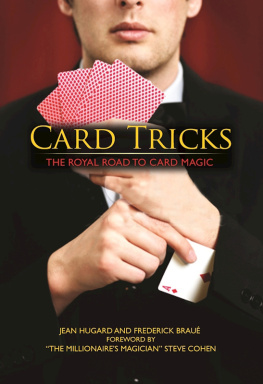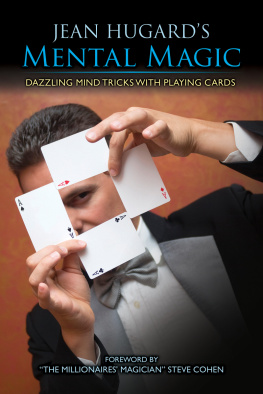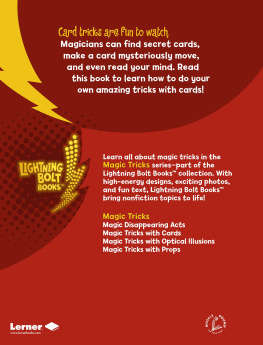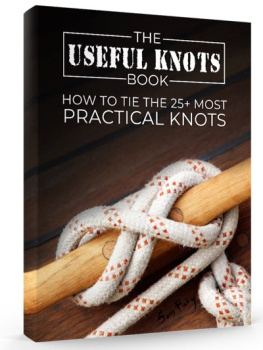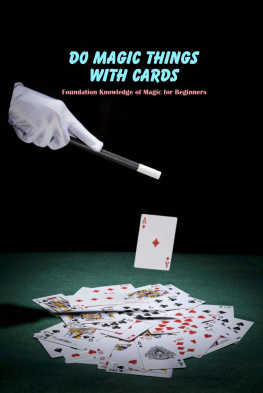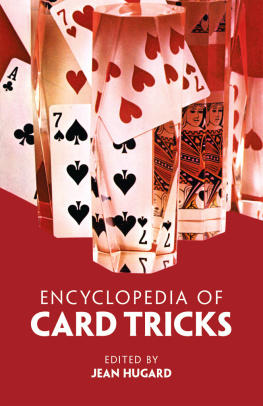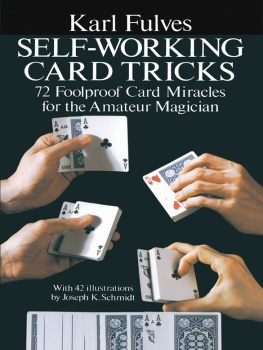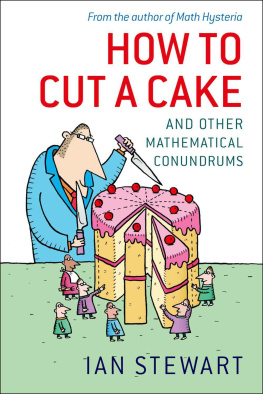M a g i c a l
M a t h e m a t i c s
M a g i c a l
M a t h e m a t i c s
THE MATHEMATICAL IDEAS THAT
ANIMATE GREAT MAGIC TRICKS
PERSI DIACONIS
AND
RON GRAHAM
With a foreword by Martin Gardner

Copyright 2012 by Princeton University Press
Published by Princeton University Press, 41 William Street,
Princeton, New Jersey 08540
In the United Kingdom: Princeton University Press, 6 Oxford Street,
Woodstock, Oxfordshire OX20 1TW
press.princeton.edu
All Rights Reserved
Library of Congress Cataloging-in-Publication Data
Diaconis, Persi.
Magical mathematics : the mathematical ideas that animate great magic tricks / Persi Diaconis, Ron Graham ; with a foreword by Martin Gardner.
p. cm.
Includes bibliographical references and index.
ISBN 978-0-691-15164-9 (hardback)
1. Card tricksMathematics. I. Graham, Ron, 1950 II. Title.
GV1549.D53 2011
793.8'5dc23
2011014755
British Library Cataloging-in-Publication Data is available
This book has been composed in ITC New Baskerville
Printed on acid-free paper.
Printed in the United States of America
10 9 8 7 6 5 4 3 2 1
To our wives,
SUSAN AND FAN
CONTENTS
FROM THE GILBREATH PRINCIPLE TO THE MANDELBROT
SET
FOREWORD
If you are not familiar with the strange, semisecret world of modern conjuring you may be surprised to know that there are thousands of entertaining tricks with cards, dice, coins, and other objects that require no sleight of hand. They work because they are based on mathematical principles.
Consider, for example, what mathematicians call the Gilbreath Principle, named after Norman Gilbreath, its magician discoverer. Arrange a deck so the colors alternate, red, black, red, black, and so on. Deal the cards to form a pile about equal to half the deck, then riffle shuffle the piles together. Youll be amazed to find that every pair of cards, taken from the top of the shuffled deck, consists of a red card and a black card! Dozens of beautiful card tricksthe best are explained in this marvelous bookexploit the Gilbreath Principle and its generalizations.
Although you can astound friends with tricks based on this principle, they are in this book for another reason. The principle turned out to have applications far beyond trivial math. For example, it is closely related to the famous Mandelbrot set, an infinite fractal pattern generated on a computer screen by a simple formula.
But that is not all. The Dutch mathematician N. G. de Bruijn discovered that the Gilbreath principle applies to the theory of Penrose tiles (two shapes that tile the plane only in a nonperiodic way) as well as to the solid form of Penrose tiles, which underlies what are called quasicrystals. Still another application of the principle, carefully explained in this book, is to the design of computer algorithms for sorting procedures.
The authors are eminent mathematicians. Ron Graham, retired from Bell Labs and now a professor at the University of California, San Diego, is an expert on combinatorial math. Persi Diaconis is an equally famous statistician at Stanford University. Each man has a hobby. Ron is a top juggler. Persi is a skilled card magician.
You will learn from their book the math properties of unusual shuffles: the faro, the milk shuffle, the Monge shuffle, and the Australian or down-and-under shuffle. You will learn some tricks using the I Ching, an ancient Chinese fortune-telling volume. You will learn how parity (odd or even) can play a roll in magic as well as provide powerful shortcut proofs.
Not only is this book a superb, informally written introduction to mathematical magic, but near the books end the authors supply pictures and biographical sketches of magicians who have made the greatest contributions to mathematical magic, from the reclusive Charles Jordan to the eccentric Bob Hummer.
Best of all, you will be introduced to many little-known theorems of advanced mathematics. The authors lead you from delightful self-working magic tricks to serious math, then back again to magic. It will be a long time before another book so clearly and entertainingly surveys the vast field of mathematical hocus-pocus.
Martin Gardner
Norman, OK
April, 2010
PREFACE
The two of us have been mixing entertainment with mathematics for most of our lives. We started off on the entertainment side, one as a magician, the other as a juggler and trampolinist. We were seduced into studying mathematics by... well, the stories that are told in this book. Both of us now make a living doing mathematics; teaching, proving, and conjecturing.
The two fields have been shuffled together for us, with frequently performed talks on mathematics and magic tricks and the mathematics of juggling. The connections go deeper. Some magic tricks use real mathematics and lead to questions beyond the limits of modern mathematics (see our chapter on shuffling cards). Sometimes, we have been able to solve the math problems and create new magic tricks (see ).
Both of our worlds have a dense social structure; thousands of players turning ideas over and over. Some of this wisdom of the ages is woven through our book. In addition to hundreds of friends and colleagues, dozens of people have made sustained contributions to this book.
On the magic front, Steve Freeman, Ricky Jay, Bob Neale, and Ronald Wohl have been coworkers, selflessly contributing their brilliance and wisdom. The students in our Magic and Mathematics classes at Harvard and Stanford have all helped. We particularly thank Joe Fendel. We had the benefit of amazing, insightful readings of our text by Art Benjamin, Steve Butler, Colm Mulcahy, and Barry Mazur. Their combined comments rivaled the length of our book. Laurie Beckett, Michael Christ, Jerry Ferrell, Albrecht Heeffer, Bill Kalush, Mitsunobu Matsuyama, and Sherry Wood went out of their way to help us out. Our editors at Princeton University Press, Ed Tenner, Vickie Kearn, and Mark Bellis have been crucial allies.
, and Ch and Susan shot (and reshot) numerous photos. Susan also contributed to the history and many other chapters.
We hope that our book will shine a friendly light on the corners of the world that are our homes.
Thanks and welcome.
Persi Diaconis and Ron Graham
M a g i c a l
M a t h e m a t i c s
C h a p t e r 1
MATHEMATICS IN THE AIR
Most mathematical tricks make for poor magic and in fact have very little mathematics in them. The phrase mathematical card trick conjures up visions of endless dealing into piles and audience members wondering how long they will have to sit politely. Our charge is to present entertaining tricks that are easy to perform and yet have interesting mathematics inside them. We cannot do this without your help. To get started, please go find four playing cards. They can be any four cards, all different or the four aces. It doesnt matter. Let us begin by performing the trick for you. Since we can do it without being present, youll be able to do it for a friend on the phone. After practicing, try calling your kid brother or your mom and perform the following.
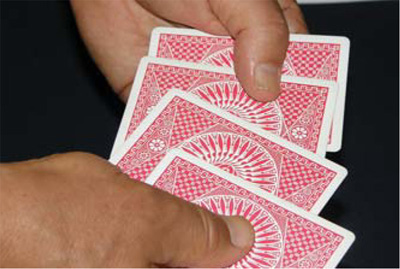
Figure 1. Four cards

Figure 2. Four cards in a packet
Next page

